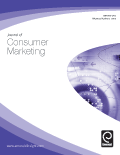Even that shticky opening sentence is nothing new.
For some reason, the last month or so has been jam-packed with no news news:
Older people have the spending power. So why are ads obsessed with youth?
 If you want the answer nine years before this question was asked, download (for free) the Introduction and 1st Chapter of Advertising to Baby Boomers ©2005/2007:
If you want the answer nine years before this question was asked, download (for free) the Introduction and 1st Chapter of Advertising to Baby Boomers ©2005/2007:Introduction and 1st ChapterMore from that Globe and Mail piece:
… The rationale for focusing on younger people used to be that advertisers who could win them over would gain a consumer for life. But research has shown that brand loyalty is fading, meaning this approach may not make sense any more.
 Brand loyalty almost always fades, and hasn’t made sense for decades. Read a review of Advertising to Baby Boomers in The Journal of Consumer Marketing.
Brand loyalty almost always fades, and hasn’t made sense for decades. Read a review of Advertising to Baby Boomers in The Journal of Consumer Marketing.It’s been a problem for years and years:The Average Age Of A Creative Is 28, While The Average New Car Buyer Is 56 - That's A Problem
Automobile ads written by … but targeting…:Hire Baby Boomer Creatives
NostraChuckus predicts the future. Again. It was 2003 when he first divined it…
Non-Diversity = SolipsismHere’s a news story that is impossible to cherry-pick. Every cherry has been plucked, packaged, and offered as sustenance by Yours Truly and others for over a decade:
… Someone commented on my comment:
You nailed it Chuck! My reaction (albeit with an agency skew) is that these spots are targeting BOOMERS, but written by 20-somethings? … Young creatives (are there really any other kind?) can't write to BOOMERS…so they write to please themselves. As a BOOMER many of us see right through this common occurrence.
Baby Boomers Are Noticing How You're (Not) Speaking to ThemI’ll snatch one piece of wrinkled fruit, just for fun:
…. One of the biggest reasons for this is marketers are beginning to close the book on this generation by relying on outdated stereotypes to inform decisions and craft messages that ultimately don’t hit the mark. It takes more than a Rolling Stones song on a 30 second TV commercial. Half of Baby Boomers (47%) told us in this same survey that companies are using inaccurate stereotypes in advertising about people their age.A few moldy posts:
03 October 2005Invoking "The Sixties": Fidelity Financial vs. Ameriprise
19 February 2007And if you’re desperate to hear me bloviate about it all, check out highlights from a European Tour in 2007:
Food fights, Balloons and Dancing Gorillas
19 December 2010
Why does the media think Boomers are smiling, vapid idiots?
Recently I penned an Afterword for an international marketing/advertising tome due out in early 2016.
A pull:
| I wasn’t the first to suggest a necessary shift away from the 18-35 demographic. In 1990, two books were released, Age Wave by Ken Dychtwald and Serving the Ageless Market: Strategies for Selling to the Fifty-Plus Market by David B. Wolfe. Many others followed, including The Definitive Guide to Mature Advertising and Marketing by Kevin Lavery (U.K) and Marketing to Leading-Edge Baby Boomers by Brent Green. |
What bewilders me about all these brand-new news articles: the disregard of historical perspective along with the absence of acknowledgements due the original thinkers and doers. It’s not difficult to research almost anything nowadays. A simple googling of ‘advertising & baby boomers’ would return over a million hits.
And as a journalist it would keep you from embarrassing yourself.



 Of course, yours truly has his opinions on these grandiose gizmos. In fact, I predicted
Of course, yours truly has his opinions on these grandiose gizmos. In fact, I predicted 

 … That silly retronym “traditional advertising” will remain the premiere force for introducing people to a product or service, along with sustaining its shelf life. Television, print, radio, and billboard ads will continue to have the visceral power they’ve always had – if only for their sheer size, simplicity, and cutting-edge audio/visual qualities. Advertising on smartphones will be considered an annoyance, invasive, and rather dinky…
… That silly retronym “traditional advertising” will remain the premiere force for introducing people to a product or service, along with sustaining its shelf life. Television, print, radio, and billboard ads will continue to have the visceral power they’ve always had – if only for their sheer size, simplicity, and cutting-edge audio/visual qualities. Advertising on smartphones will be considered an annoyance, invasive, and rather dinky… … People will power up desktops/laptops for work and interactive pursuits, then grab their tablets for passive pleasure.
… People will power up desktops/laptops for work and interactive pursuits, then grab their tablets for passive pleasure.



 A collection of posts about aging in place, with lots o’ links:
A collection of posts about aging in place, with lots o’ links: ![[crystal_ball_2.jpg]](https://blogger.googleusercontent.com/img/b/R29vZ2xl/AVvXsEiZLns-Q1Nt3LyLylKXa_91s8tWXzBqYhj7nIO7in0TLa4xw4d3R7wZfYJHME5EINVUXEQaGer084sajNtHn3p7CSadP2xdpF2wKid9sjSjs9sGEP__ZsHokbSRqsstgWwHo55ibA/s1600/crystal_ball_2.jpg)





 … "I don't think I have anything you can sing along with. Ask your grandmother."
… "I don't think I have anything you can sing along with. Ask your grandmother."